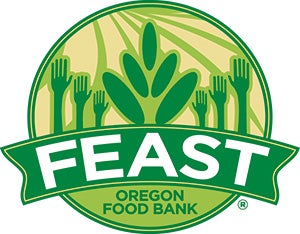Oregon Food Bank’s objective to make sure everyone in the state will have enough to eat is supported by the recent release of a series of reports based on assessments performed in Oregon’s rural communities.
Since 2008, the University of Oregon’s RARE (Resource Assistance for Rural Environments) AmeriCorps program participants, sponsored by Oregon Food Bank, have been evaluating and working with Oregon’s rural communities to assess issues of food, hunger, and food waste in rural communities. Thirteen comprehensive reports were completed as of May 2013; individual county reports have been summarized in a document titled “The State of Our Community Food System.”

Oregon Food Bank is a statewide network that collects and distributes food throughout Oregon and southwest Washington. The RARE researchers’ efforts covered twenty-one counties across Oregon.
“The ultimate goal of the overall project is to secure sustainable food systems in rural Oregon,” said Megan Smith, RARE program director and Community Service Center co-managing director. “Part of that is public education but [it’s also] the on-the-ground project.”
Producers, retailers, and consumers were surveyed for the reports by means of one-on-one interviews and community group meetings. The comprehensive assessments identify ways to ultimately eliminate hunger and its root causes through advocacy, nutrition education, garden education, and strengthening local community food systems.
The reports set out to answer a number of questions, the foremost being “Is food available, accessible, and affordable?” They hope the answers will establish what is needed to create a more secure and healthy community food system.
This food assessment project is the first to take an extensive, community-based approach to examining Oregon’s food system in its entirety.
“The assessment process empowers communities to act upon certain opportunities in terms of their food supply or in their food system,” said Spencer Masterson, community resource developer for Oregon Food Bank. “These system-wide efforts feel like they’re beyond an individual community member’s ability to do anything, but these are things people can work on and create success by working together. That’s the major takeaway point.”
“The State of Our Community Food System” offers several solutions for a more resilient food program: increasing healthy food access, organizing community food events, promoting food literacy, and supporting local farmers.
“It’s a cooperative process with community members to come up with those,” said Masterson.
The reports emphasize supporting local, farm-direct growers, because buying from local farmers also supports the local economy. For example, Wallowa County alone could generate an additional $1.6 million if residents bought 15 percent more food from local farmers.
“We certainly have uncovered issues that need to be solved by public policy,” said Sharon Thornberry, Oregon Food Bank systems manager.
The Association of Oregon Counties and the Regional Solutions Team staff from Governor John Kitzhaber’s office have been informed of the project in the hope that it will influence policy.
“The focus is really on the community,” said Masterson. “We have presented to legislators, county commissioners, and public officials. The purpose is to inform the general public about these issues and how to get involved.”
Rural residents, minority populations, tribal communities, and youths are among those most affected by food insecurity. Oregon, according to the report, has one of the highest rates of childhood hunger in the U.S.
As a direct result of the surveys, farmers’ markets were started in Clatsop, Grant, Klamath, Lincoln, Malheur, and Wheeler counties. In Linn and Lincoln counties, the RARE participants helped launch a SNAP (Supplemental Nutrition Assistance Program) match program for farmers’ markets. Community gardens were started in Klamath and Lane counties.
North Coast Food Web was established in 2011 as a result of the 2010 community food assessment for Clatsop County. NCFW is working to create a more sustainable food system in Oregon, including development of gardens throughout the community at sites that include Astoria’s middle and high schools.
North Coast Food Web founder Kristin Albrecht calls the report NCFW’s “bible.”
“It gave us a history of food in our community and a roadmap for the future,” she said. “It gave the work credibility, because we invested the time to document problems and identify solutions.”
Complete assessments for all of Oregon’s rural counties are expected by 2015.
